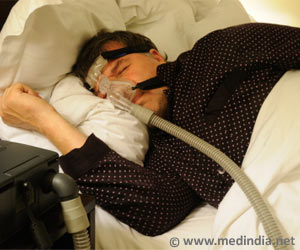Three hundred and forty-six patients underwent diagnostic overnight sleep study and cardiac PET imaging. During the sleep study, obstructive features were categorized into three major groups: mild or no OSA, moderate OSA, or severe OSA.
Hypoxia (low oxygen levels in tissues) severity and clinical symptoms of sleepiness were also recorded. Cardiac PET imaging, which measures myocardial blood flow reserve, was performed to identify coronary microvascular disease.
Analyses were conducted to compute the odds ratio of abnormal myocardial blood flow reserve for each of the OSA severity categories.
The frequency of abnormal myocardial blood flow reserve increased with worsening OSA; patients with severe OSA had more than twice the chances of having heart blood flow impairment as those with mild, moderate, or no OSA. There was no association between hypoxia severity or sleepiness and myocardial blood flow reserve.
Advertisement
“Interestingly, the significant relationship between OSA severity and myocardial blood flow reserve persisted among those with normal heart PET perfusion scans and no prior history of coronary artery disease,” said Ehimen Aneni, MD, MPH, an instructor at the Yale School of Medicine in New Haven, Connecticut. “The findings of this study may begin to explain why people with obstructive sleep apnea develop heart disease, including heart failure.”
He continued, “Future studies should focus on the role of myocardial blood flow reserve in risk stratification and prognosis of OSA, as well as on the impact of OSA-specific therapy on myocardial blood flow reserve.”
Source: Eurekalert



